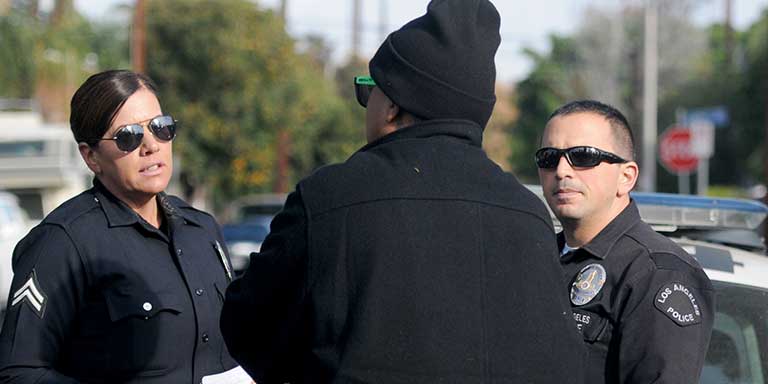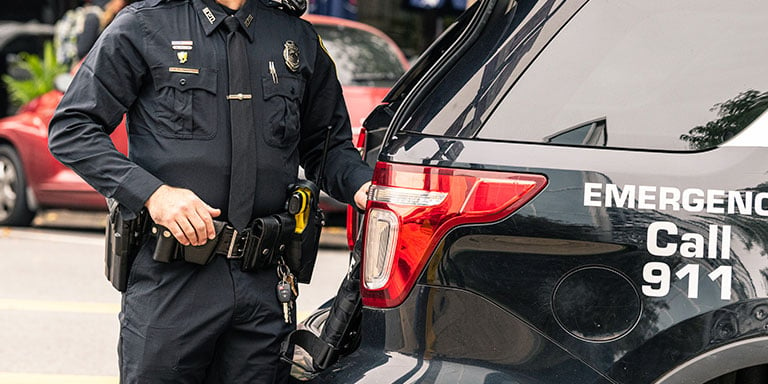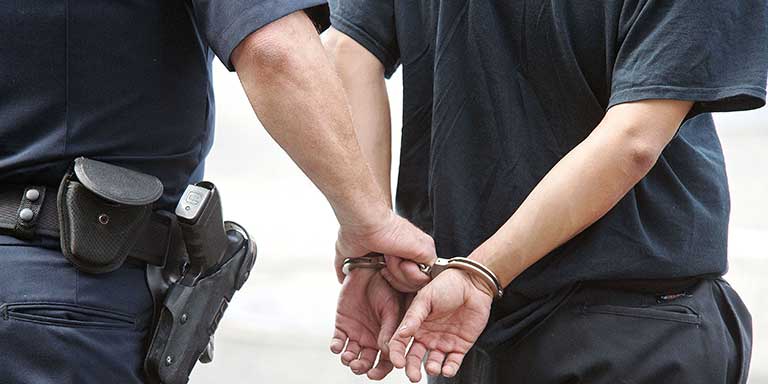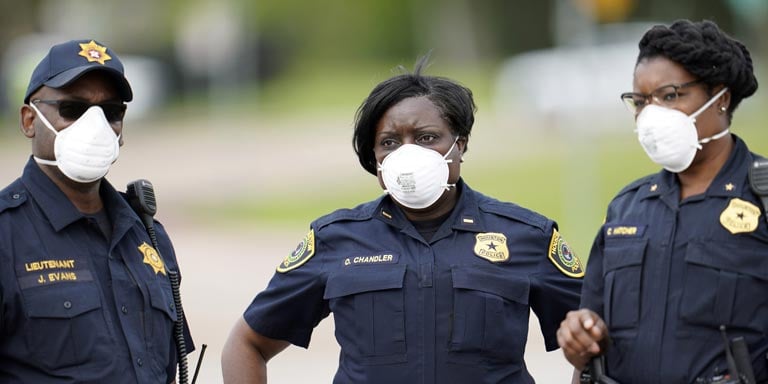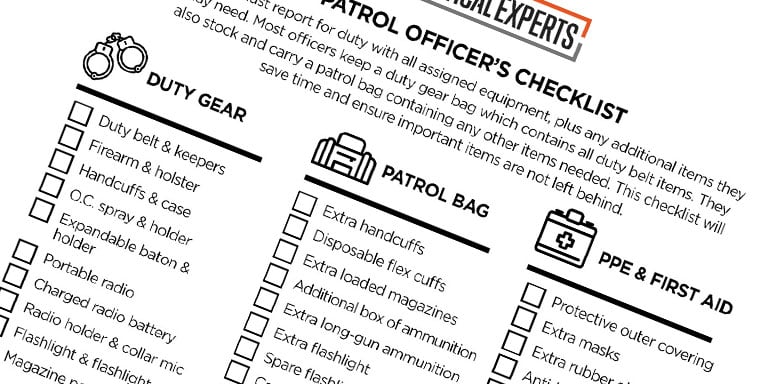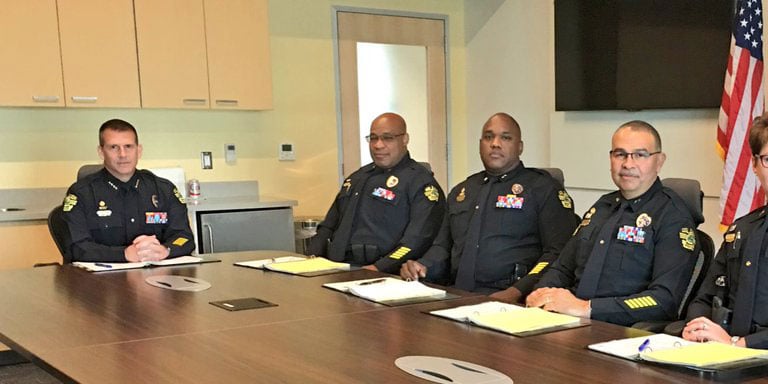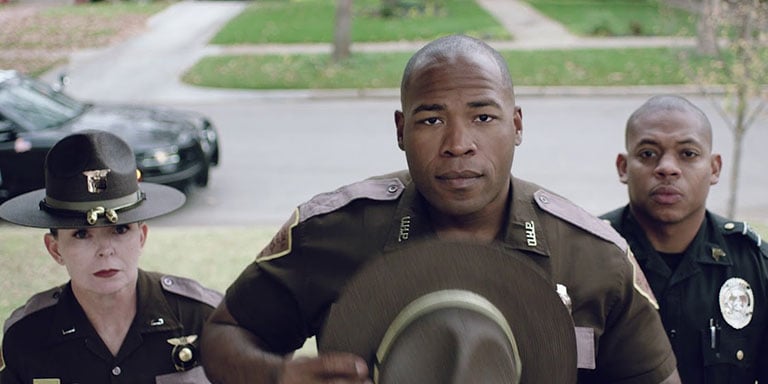
Learning of the unexpected loss of a loved one is an extremely traumatic event. Properly handling a death notification can aid in the grieving process. The time spent and the words used will often remain with the survivors for the rest of their lives. Completing an effective death notification requires some planning and preparation.
Good information is essential

Death notifications should be done as soon as possible after the event. The first step in the process is gathering and verifying information. How was the decedent identified? The best methods include identification by fingerprints, DNA, and dental records. Less reliable methods include identification by a witness or by identifiers found on their person. The family will often ask questions about identification. It is usually a denial reaction, but the officer needs to be certain the identification is conclusive.
The next step is to gather as much information surrounding the loss of life as possible. The circumstances, the location, when, and how the incident occurred — all should be included. If it was the result of a criminal act, was an arrest made, or has a suspect been identified? Determine the hospital holding the deceased and the procedures for the family to view their loved one.
The final step is identifying the legal next of kin. This may seem straightforward, but it may not be. Who is the deceased's legal guardian? Who is the closest relative if the deceased is an adult? Once determined, locate the residence of those persons. If they are older, check any available records for indications of medical problems. A death notification to a person with a heart condition may become a medical emergency. In these situations, it is wise to have an ambulance nearby to respond as needed.
Notifications — always made by two, always in person
All death notifications should be delivered in person, by a two-person team. At least one of the two needs to be a police officer. The first step will be picking the team. Hopefully, it isn't merely the first two officers who are clear of calls. The investigating officer is a good choice, as they will have the most facts about the case. If the investigating officer isn't available, then a superior officer would be an excellent second choice. The officers selected must be able to deliver a compassionate, respectful, and dignified notification.

In certain circumstances, a police officer may take a civilian with them as the second team member. If the surviving family is deeply religious, bringing their local pastor or a police Chaplain may work well. Most hospitals have grief counselors available to provide comfort to the surviving family members. Occasionally, a close friend of a single survivor would be a good choice for the second team member. They can provide support and remain with the survivor after the officer leaves.
Plan notification — who will speak, what will be said?
Each of the two persons making the notification will have pre-planned roles. One police officer will do all of the talking, making the notification. It is easier for a person to follow the conversation when only one person speaks. The other officer or support person will watch for a reaction, which may indicate a medical emergency — such as a person going into shock.
Police officers never deliver death notifications at a person's front door. The first step is to make sure they are speaking to the correct person. Then ask permission to enter the survivor's home, conveying the message that they have something of importance to tell them. Using a uniformed officer will prevent confusion. The presence of someone they know, such as their pastor or close friend, can also help put them at ease and allow entry.
If there are young children present, you should ask to speak with the survivors away from the children. Once inside the home, try to lead the survivors to a comfortable area where they may be seated. The living room is a good choice.
The first words delivered are the most important:
"We are here to deliver bad news."
This simple statement partially prepares the survivors for what is to come. The next words must be spoken plainly with compassion, but without confusing terms. Using vague terms to describe death will only be confusing at a time when clarity is paramount. Phrases such as: "passed away", "didn't survive", or "didn't make it" should not be used.
Tell the person what happened — the circumstances and the result
Here are some examples of a proper death notification statement:
Your son John died of what appears to be a self-inflicted gunshot wound.
Your daughter Melissa was killed in a car crash last night.
Your father, Allen, died last night after falling down the basement stairs.
Your brother Robert was shot and killed last night during a robbery at his store.
In each example, the delivery is short, direct and to the point. Each uses the person's name and then immediately states that they died with a brief explanation of the circumstances. After the initial delivery, it may take several minutes for heartbreaking news to sink in. You may have to repeat the notification statement several times clarifying their loved one died.
Be prepared for almost any initial reaction

There is no right way to react to devastating news. Everyone is different, and the reactions will be unique to the individual. If a person immediately becomes quiet, staring into space and shows no response, they may be in shock and will need medical attention. Other normal responses include screaming, crying, falling onto the floor, punching, or breaking things. They may become angry with the officer as the messenger of the news. Others will retreat to another room. If you fear that they are in danger of harming themselves, then the officer needs to step in and gently restrain them until medical assistance arrives. This can take the form of a strong comforting hug. If the individual takes the news especially hard, remember to use the de-escalation techniques you have at your disposal.
Allow time to answer questions and provide assistance.
After several minutes have passed and they are recovering from the initial shock, it will be time to answer any questions they may have. Be prepared to answer the four most common questions asked:
How do you know for sure it's their family member?
What happened to them?
When did this happen?
Where are they now?
Answer all of the surviving family members' questions honestly and compassionately. Be mindful of their fragile state. When explaining the circumstances surrounding the fatal event, use care to be generic and non-graphic in describing the events. If you don't know the answer to a question, tell them so, but indicate that you will work to find the answer. Never promise to do anything and not follow through.
Provide assistance to the survivors as needed or requested. It is often helpful to make calls to other relatives who can offer additional support. If the deceased may be viewed at the hospital, the notifying officer should make these arrangements. The officer should also provide transportation to and from the hospital. In some cases, the next of kin may also need to make a visual identification of the deceased.
If an autopsy is required, the notifying officer should be able to explain the reason and a general non-graphic explanation of the procedure. In some cases, organ donation may be a viable option, and the notifying officer should be able to set up communication between the hospital and next of kin.
If asked, the officer should know the procedures involved in the release of the deceased and provide guidance. If requested, the officer may also make contact with a funeral director of the survivor's choice to set up arrangements for the removal of the deceased from the hospital.
Special Circumstances
If the next of kin lives far outside of the officer's jurisdiction, the local police department with jurisdiction must make the in-person death notification. The necessary information should be prepared and transmitted to the notifying agency. This should include:
The full name, date of birth and identifiers of the deceased
The full name and address of the legal next of kin to be notified
A synopsis of the circumstances surrounding the deceased's death
The name, address, and telephone number of the hospital where the deceased is located
The name, addresses and telephone numbers of the investigating officer and their police department
Many police departments provide this information over the phone to the police department making the notification. It's not best practice, as some information may be lost or undocumented. The officer should follow up the call with a faxed report, documenting all the necessary information. The investigating officer should be available by telephone at the time of the notification to answer additional questions the family may have.
There will be times when the next of kin are at work, and a death notification must be completed without delay. The timeliness of a death notification is more important now than ever before. Living in the age of social media, it is common for the next of kin to find out through their social network before police can even attempt a notification. At this point, the officers are merely confirming the loved ones' worst fear. While this may make the officer's duty easier, it is much harder on the family members, waiting for that knock on the door.
A workplace notification still requires a two-person team and the same procedures as a residential notification apply. Upon arrival at the business, locate the person's supervisor. The officer will ask to meet with the particular employee regarding a family emergency. A quiet location should be selected where the survivor can sit and listen. It will be up to the employee as to how much information the officer shares with the person's supervisor. The officer should arrange for transportation from their place of employment to their residence or the hospital.
When the deceased is not a resident of this country and their family resides outside the United States, police should contact the proper foreign embassy. The consulate will arrange to locate and notify next of kin.
Clearing the Assignment
A police officer must never leave a person home alone after a death notification. Arrange for a friend or family member to stay with the grieving person. The officer must not leave until the designated person arrives. Before leaving, the officer and second team member will leave names and contact information. They should also stress that if any further questions arise, to call them directly for assistance.
When the officer is confident they have done all they can to comfort and assist the surviving family members, the officer is free to clear the assignment.
Receiving a death notification from a police officer will be a once in a lifetime event for most survivors. It will be one of the worst days of their life. The loss of a child or teenager is especially difficult. Officers must accept the survivor's reaction and emotions just as the officer must accept their own. Police officers are not cold or unfeeling. If a notification moves an officer to shed a tear, understand that it is not a sign of weakness, but rather a genuine gesture of emotional empathy.
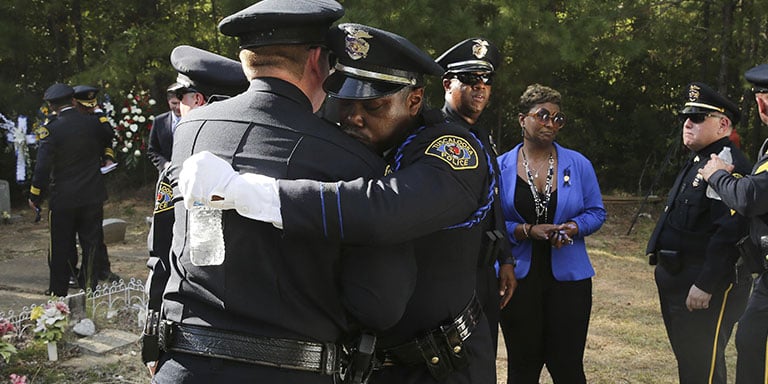
Nothing a police officer can say or do will ease the extreme emotional pain of such a loss. However, a proper death notification that is direct and compassionate will aid in the grieving process. It must be viewed as both a duty and an honor to handle such a difficult assignment — easing the pain of the message officers are entrusted to deliver.
Did you find this article helpful?


